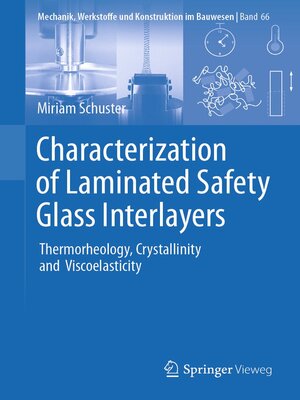Characterization of Laminated Safety Glass Interlayers
ebook ∣ Thermorheology, Crystallinity and Viscoelasticity · Mechanik, Werkstoffe und Konstruktion im Bauwesen
By Miriam Schuster

Sign up to save your library
With an OverDrive account, you can save your favorite libraries for at-a-glance information about availability. Find out more about OverDrive accounts.
Find this title in Libby, the library reading app by OverDrive.



Search for a digital library with this title
Title found at these libraries:
| Library Name | Distance |
|---|---|
| Loading... |
Laminated safety glass enables the safe construction of transparent structures. The mechanical behaviour depends on the polymeric interlayer both in the intact and in the post fracture state. In the present work, the mechanical behaviour of ethylene vinyl acetate-based (EVA) and ionoplastic interlayers is investigated for the intact laminated safety glass condition. In particular, the influence of the semi-crystalline structure on the stiffness behaviour is studied with X-Ray Diffraction, Differential Scanning Calorimetry and Dynamic-Mechanical-Thermal-Analysis. The studies on the mechanical behaviour of the interlayer in the fractured laminated safety glass were carried out with polyvinyl butyral-based (PVB) interlayers. First, the temperature and frequency (time) dependent linearity limits are determined in Dynamic-Mechanical-Thermal-Analyses, second, the nonlinear viscoelastic material behaviour is investigated with tensile relaxation tests at different temperatures and strain levels.







